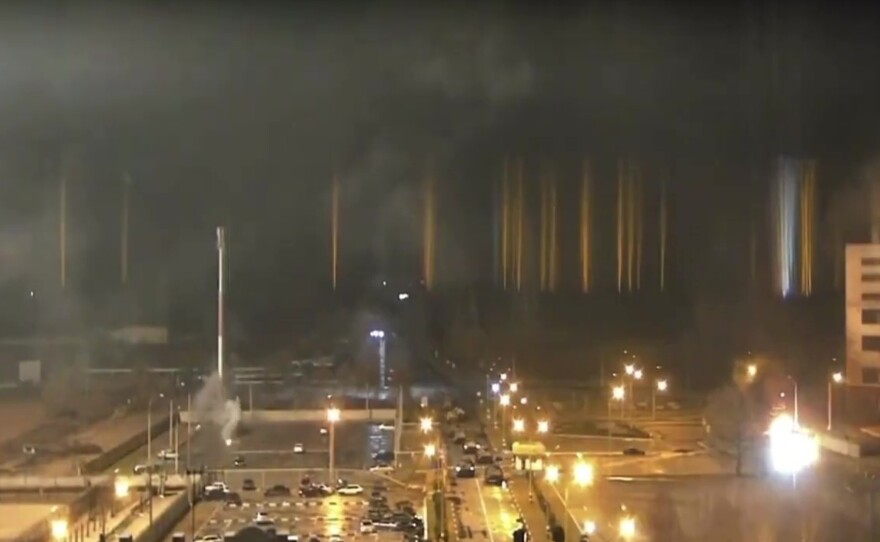Russian forces have captured a Ukrainian nuclear power plant — the largest in Europe.
Heavy fighting caused a fire to break out near one of the Zaporizhzhia plant's six reactors, but Ukrainian authorities say the fire has been extinguished. They also say there were many casualties from the fighting around the plant, which started late Thursday.
At a press conference Friday morning, the head of the International Atomic Energy Agency, Rafael Grossi, said the plant's safety systems are intact. "There has been no release of radioactive material," Grossi said.
Loading...
NPR's Geoff Brumfiel has this update on Morning Edition:
How serious is the damage?
Any sort of damage to a reactor is never good, but these reactors are huge machines. The nuclear material in the reactor sits inside a thick metal pressure vessel, known as its containment, and it's really tough. So it's entirely possible this building sustained some type of damage superficially, but that the reactor itself is safe. Still, though, we've just never been here before, either in terms of nuclear power or modern warfare.
Why would Russia want to take control of this plant?
About half of Ukraine's electricity comes from nuclear power, and this plant is the biggest. It's located in the southeast and is hugely important to the nation. The six reactors provide up to 6,000 megawatts of power.
And we've already seen Russia move on other essential infrastructure, like hydroelectric dams, so it makes sense they'd try to seize this facility.
Could we be looking at a Chernobyl-like meltdown?
Probably not. These reactors are a different design and overall they're much safer than what was in operation at Chernobyl [in 1986]. But this remains a superserious situation. Large reactors like these — you can't just flip a switch and turn them off. Their nuclear cores remain hot for days or even weeks after a shutdown. This plant still needs operators working there, it needs power and water to cool the cores. And there are still three other nuclear plants in other parts of the country, including one near Odessa. So I think we are still dealing with a very fluid situation, and there's a lot of risk here.
Copyright 2022 NPR. To see more, visit https://www.npr.org. 9(MDAzMjM2NDYzMDEyMzc1Njk5NjAxNzY3OQ001))







